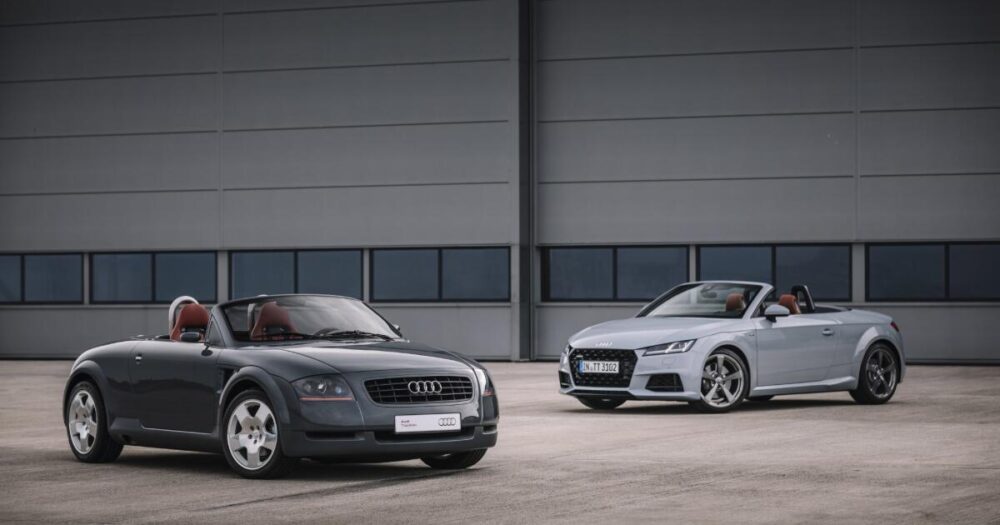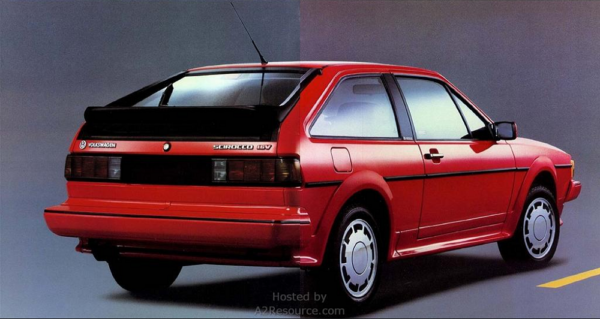Audi History: The Audi TT
In 1998, Audi debuted the iconic TT, a sporty 2+2 with a timeless design and a deceptively storied heritage.
At first glance, the Audi TT appears relatively standalone, certainly in American markets. You’d be hard-pressed to locate a straight line anywhere on its distinctive styling. It’s not a particularly luxurious vehicle, either, at least by Audi’s standards. But it’s certainly the best bang-for-your-buck in the Audi lineup. Against other Audis, the TT appears small, peppy, even retro-inspired. However, Audi designed the TT this way quite deliberately. A mixture of German and American designers, led by J Mays and Freeman Thomas, penned the 2+2 as the first sports car to debut on Audi’s new A4 platform. But the story doesn’t begin when J Mays’ pen hit the paper. For the true beginning, we’ll have to go way back to 20 years prior for the release of another legendary compact sports car.
Creating the A-Platform

The Volkswagen Mk1 Golf/Rabbit’s internal designation is the Typ 17. Brochure images sourced from A2Resource.com
The year’s 1973, and the Oil Crisis tightens its grip across the world. Volkswagen struggled to move Beetles like they used to, with foreign competitors producing modern, innovative designs. Since the early 1950s, Volkswagen sought to replace the aging Type 1. Although many tried, none made the cut. Realistically, the vehicle that succeeded the ubiquitous coupe had some mighty big shoes to fill. It took a design penned by world-renowned Giorgetto Giugiaro, one he considers his magnum opus, and the perfect storm of the Oil Crisis to see the project through.
And in May of 1974, the first-ever Volkswagen Golf debuted in Europe. Known at the time as the Rabbit in the US, the Golf set the benchmark for what defined the hot hatch to this day. And, crucial to the story of the Audi TT, it marked the first iteration of Volkswagen’s new A-platform. Throughout its initial iteration, Volkswagen adapted the compact chassis with a wide variety of bodies. This first production run lasted until 1983, seeing everything from sporty coupes to pickup trucks.
A Design to Stand the Test of Time
Throughout the years, Volkswagen Auto Group (VAG) continued improving the design, with each marque contributing. The platform saw a total of 4 major iterations between 1974 and the 1990s, featuring bodies by VW, Seat, Skoda, and Chery. However, Audi continued production of its 80-series platform at this point, its last gasp being the S2. The S2, itself a successor to the famous Quattro, stood as a mighty saloon car, easily capable of 155 mph. And while no sane person argues that the S2 isn’t sporty, it certainly wasn’t a light, nimble mid-entry level car. That said, the A-platform certainly made a name for itself as a host of such vehicles. The Golf GTI and Scirocco 16v, among others, represent quintessential hot-hatch design. For Audi to follow in such vehicles’ footsteps, they thought outside the box. Rather than a hatch, they instead chose a 2+2 coupe/roadster configuration for their sporty little car.
In the early 1990s, automotive markets took a drastic turn away from larger, boxier 1980s vehicles into curvy, smooth compacts. With this shift in sensibilities, the 80-platform sold poorly in US markets, leading Audi to rethink its design priorities for the next generation. And so, with the 3rd iteration of the VAG A-platform running its course, Audi took the reins in designing the new chassis. And, of course, a brand-new sports car along with it, a spiritual successor to the S2.
The Audi TT Concept
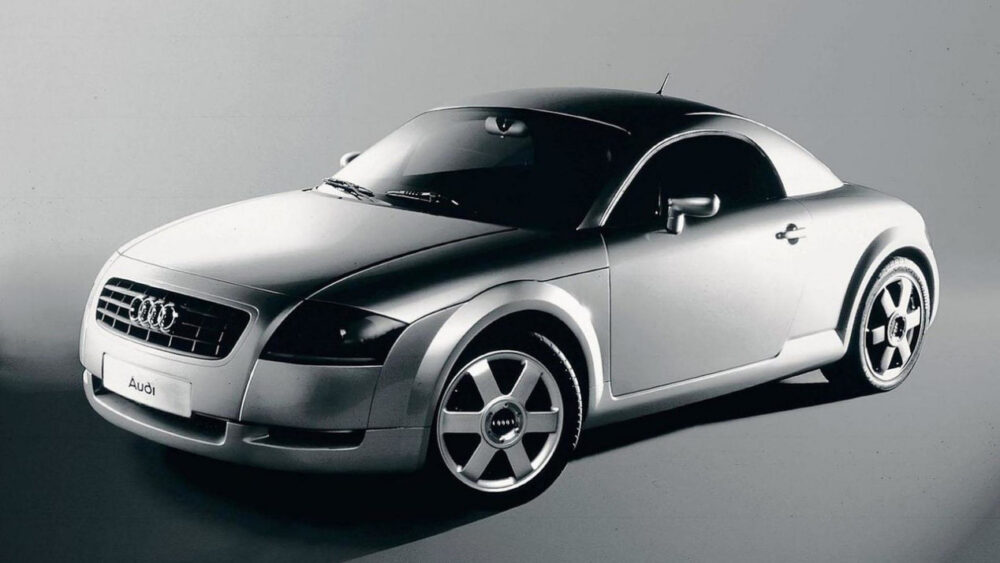
Penned by J Mays (Yes, his first name is simply “J”) and Freeman Thomas, the 1994 TT concept draws inspiration from much farther back than the Quattro this time. Rather than the timeless boxy styling, the TT derives its cues from interwar Auto Unions. This influence is primarily seen on the heavily-rounded nose and proportional rear, along with the extended fender flares and hard lines cut into the front fenders. The bulbous shape remains quintessentially German due to racers such as the Silver Arrows, making the TT’s origins obvious to even untrained eyes. And much like the streamlined racers of yesteryear, the design evokes a function-follows-form aesthetic. This trend continues into the interior, with steel inserts on plastic trim, a no-nonsense steering wheel, and a functional short-throw shifter. However, because it’s German, concessions were made to include supple leather seats.
This classic racing inspiration goes further than skin-deep, however. Named after the famous Isle of Man TT, the car boasts an all-new take on VAG’s famous EA-series of engines, the 1.8L R4. This 20V 1.8L turbo I-4, created entirely by Audi, appears quite modest to the uninitiated. Developing just 161 horsepower, it’s a far way down from the 227 of the S2. However, in spite of its unassuming displacement and figures, it marks Audi’s next great motorsport engine after the Quattro’s I-5. Since its inception, this overbuilt underdog’s seen the engine bays of everything from Golf GTI’s to Formula Twos, producing anywhere from 145 to over 480 horsepower. To this day, the EA113/EA827 remains one of the most popular German engines for aftermarket tuners and racers. Prized for its reliability and ease of modification, the engine proved a perfect fit for the TT, lending it accessible, repeatable performance.
The Production Audi TT Debuts
Following rave reviews of the concept, Audi forwent altering the body style, choosing instead to only include the most minor alterations. Primarily, the main difference is improved visibility with additional rear quarterlight windows. The interior, designed by Peter Schreyer and others, remained relatively unchanged as well.
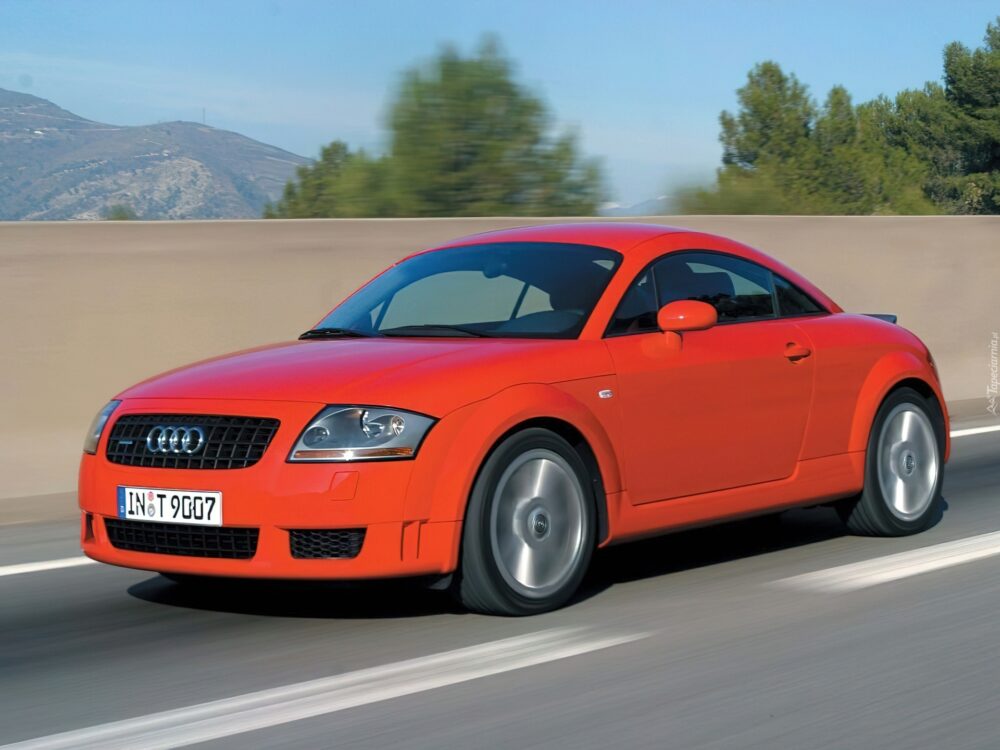
Audi designated the TT as 8N. It marked the 2nd car on the PQ34 A4-platform, the first being the Audi A3.
In October 1998, the Audi TT entered into full production, some four years after its first showing. Audi originally offered the car as just a coupe, though the roadster variant debuted shortly after in 1999. Overall, Audi marketed the car towards a younger, fun-loving, sporty demographic. As such, the car remained affordable by Audi standards and featured relatively few luxuries. For example, the original TTs featured only manual gearboxes and no active assists or rear spoiler. However, following a number of high-speed accidents, Audi implemented the latter two features on all TTs, and issued a recall. Much like the 80-series which preceded it, the TT also boasted Quattro AWD as an option, providing a 97.5% rear /2.5% front torque split.
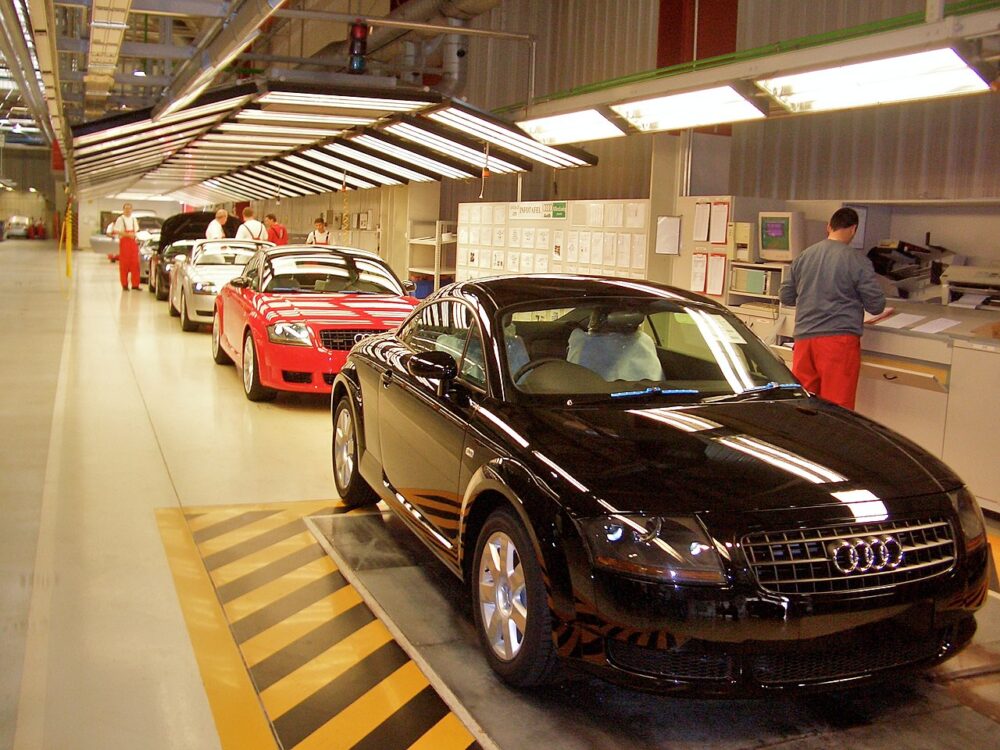
Audi provided the only face-lift to the original TT for the 2003 model year.
Throughout its initial production, the TT underwent little cosmetic or powertrain changes in the mainline run. However, by 2003, Audi did expand its list for those craving more performance. The first major addition came with the VR6, a 3.2L unit boasting 247 horsepower. In addition, they offered the TT with a semiautomatic transmission, either a direct-shift gearbox for the 3.2L Quattro or Tiptronic for all others. And in 2005, Audi went one step further. In the tradition of its S and RS models, Audi offered a TT Sport in a very limited-production run of just 1,165 units. This model pushed 240 horsepower from the 1.8L turbo and weighed 165 pounds less, claiming a limited speed of 155 mph over the standard 146 mph. Audi produced 800 of these in right-hand drive, making the left-hand drive variant the rarest standard-production TT.
Still Going Strong
The original Audi TT, overall, marked a success for Audi in terms of design and marketing. The press scarred the TT’s reputation in the late ‘90s and early ‘00s as an unsafe youth’s car. But this ultimately worked in Audi’s favor. Publicity, and the TT’s distinctive characteristics, propelled its popularity in spite of relatively low sales figures. Since its debut, the car received 3 major iterations across 2 platforms: the A and MQB platform. The TT also sees heavy use in motorsport, taking its first DTM title in 2002 driven by Laurent Aïello. Since then, Le Mans featured it as a safety car in 2009. And to this day, the TT continues racing in all its iterations, from a favorite mid-range track car to high-level competition.
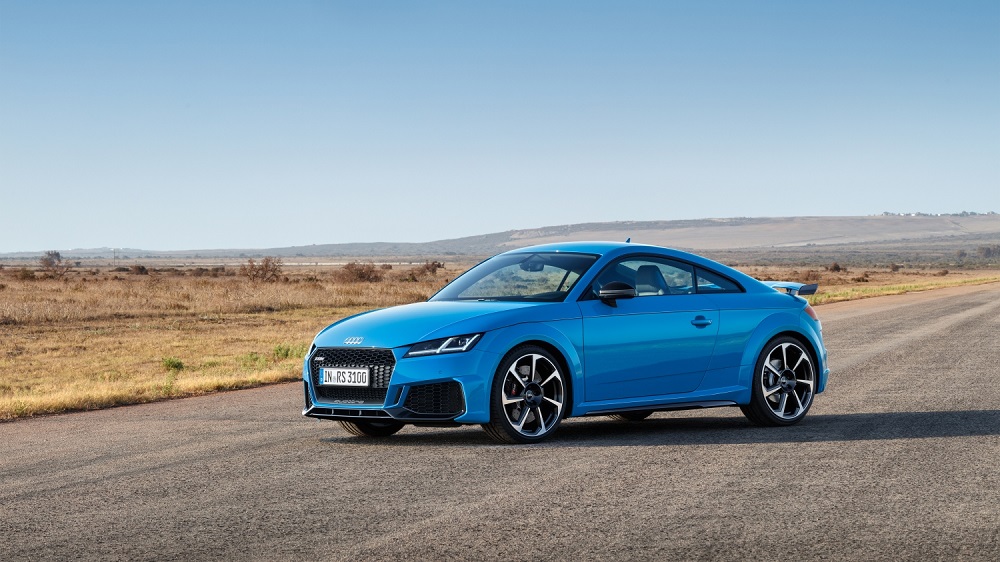
The modern Audi TT retains much of what made the first one special. Like the original, the new TTs feature similar styling, a turbocharged 4-cylinder, and manual transmission. However, with the modern MQB platform, the new TT is actually lighter and stiffer, weighing as little as ~2700 pounds. And, of course, let’s not forget about the TT RS. Introduced in 2009, the latest iteration features a whopping 394 horsepower coupled to a 7-speed S-Tronic transmission.
Complementing the R8 halo car, the TT offers that same level of excitement in a practical 2+2 package. And while less prestigious these days, even a first-generation TT hasn’t lost its luster. With the bulletproof 4-cylinder and timeless design, it’s no wonder the Audi TT became such a well-recognized car. When it comes to compact sports cars with good power/weight ratio and daily usability, you can certainly do worse.

